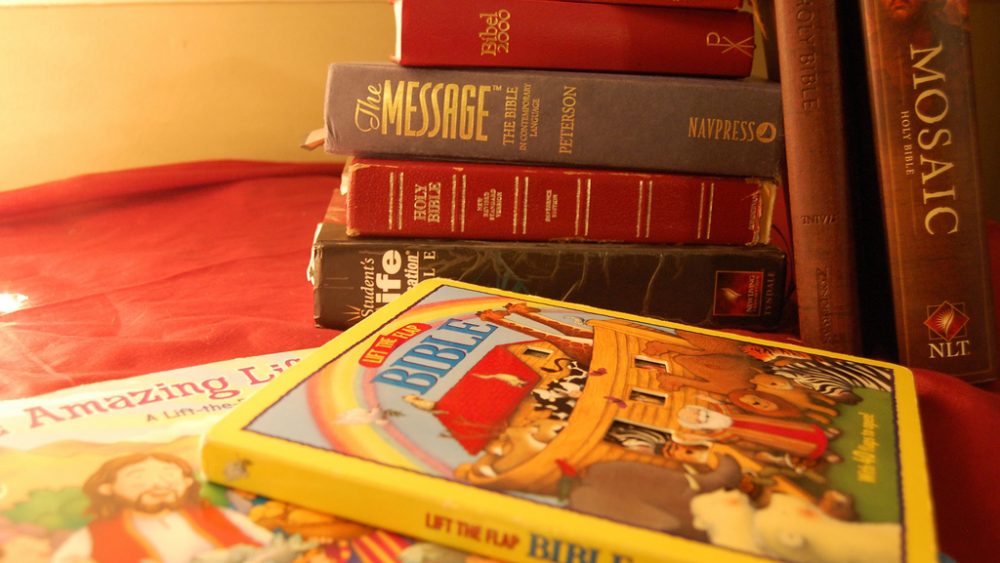Jean Williams is a Mum of four, based in Melbourne. She blogs at Jean In All Honesty, where this post originally appeared, but has been updated for Eternity.
Of the making of many children’s Bibles there is no end, and much study wearies the body
(Ecclesiastes 12:12, paraphrase). That’s pretty much how I feel after investigating lots of children’s Bibles for this post.
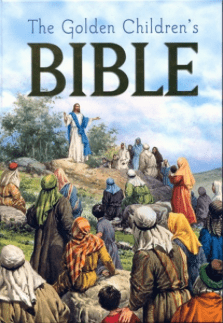 It’s a far cry from my childhood, when the only children’s Bible we had was an enormous tome written in old-fashioned prose. (I suspect it might have been The Golden Children’s Bible, still a decent choice for a children’s Bible.) Apart from that, we read adult Bibles and discussed them with our parents during family Bible time. I don’t think it did us any harm.
It’s a far cry from my childhood, when the only children’s Bible we had was an enormous tome written in old-fashioned prose. (I suspect it might have been The Golden Children’s Bible, still a decent choice for a children’s Bible.) Apart from that, we read adult Bibles and discussed them with our parents during family Bible time. I don’t think it did us any harm.
That said, modern parents should be very grateful for the huge number of excellent resources available to us. Obviously we want to expose our kids to the Bible. We want them to get to know the Bible stories. We want to read them Bible stories in a format they can understand and relate to.
Do they skip over God’s judgement during the flood and the Passover? Do they tell the story of Jonah to the end?
Here are some good Bibles for different age groups.
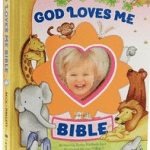
I’ve chosen a few key stories to test them out: Do they skip over God’s judgement during the flood and the Passover? Do they tell the story of Jonah to the end? Do they tackle difficult subjects like the sacrifice of Isaac? How do they handle Jesus’ death?
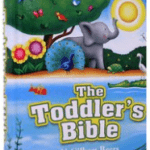
1 year olds: the God loves me Bible, probably the only Bible I’ve seen that has stories short and simple enough for babies. Each page ends with “… and God loves you”, which is a pretty good repetitive phrase to get into a 1-year old’s head. Ours fell apart we read it so often!
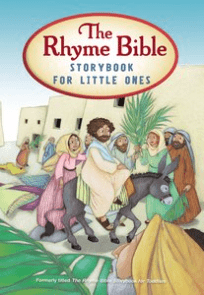
2 year olds: The Toddler’s Bible. The stories are simple and short enough for tiny attention spans, with clear, colourful pictures. The theology is simple but clear: the story about Jesus’ death has an excellent gospel explanation, for example.
2-5 year olds: The Rhyme Bible Storybook. This would never be the only Bible you buy, as it’s told entirely in rhyme, but it’s a great second Bible for a young child, and good fun for reader and listener. This has been read a lot in our family: our kids all adored it.
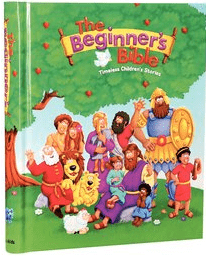
3-5 year olds, great for 3s: The Beginner’s Bible. An excellent choice for a very young audience. The sentences are short and clear, and the illustrations simple and cartoon-like. Like most kids’ Bibles, it’s a little coy about the flood, but tells the full story of God’s judgement on Egypt, and explains the cross really well.
3-5 year olds, great for 4s:
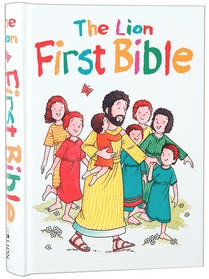
The Lion First Bible. This is particularly fun to read, and the illustrations are well-drawn and appealing. It doesn’t come clean on exactly what happened during the flood and the passover, but includes a lot of stories for a kid’s Bible, not skipping past uncomfortable bits like the sacrifice of Isaac. The quality of the writing makes it a good choice.
4-6 year olds: Read With Me Bible. One of my personal
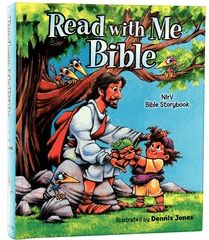
favourites, this uses a simplified text of the NIrV, so it’s a great introduction to the language and phrases of an adult’s Bible. It’s highly readable, tells the full story of the flood and the passover, includes a good range of stories, and has bold comic-book style pictures that appeal to our kids and make me smile.
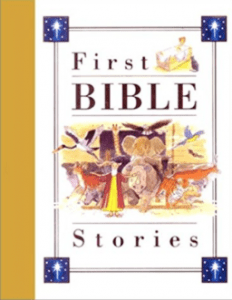
4-7 year olds: First Bible Stories. Well-written, comprehensive and true to the Bible, this is a reliable choice for a kids’ Bible. It doesn’t avoid the topic of God’s judgement, and it takes Jonah’s story right to the end (now that’s unusual for a children’s Bible), but it skips the sacrifice of Isaac. The illustrations are appealing, and my kids especially liked the detailed borders.
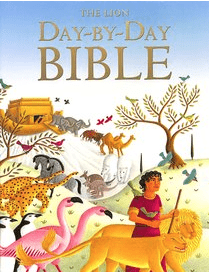
4-10 year olds: The Lion Day-By-Day Bible. Here’s that rare thing: a kids’ Bible that is both comprehensive and simply written. It retells much more of the Bible than most kids’ Bibles, doesn’t miss the scary bits, and actually covers the whole story of Jonah! The readings (one for each day of the year) are short and well-told, and the illustrations are gorgeous. (My friend Deb tells me the Old Testament is much better than the New in this version.)
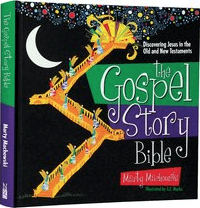
6-12 year olds: The Gospel Story Bible. I’m reading this to our kids at the moment, and we’re enjoying it, especially the discussion questions that open each story. The writing is quite dense and the ideas challenging, so it’s more suited to older children; but it’s highly accurate and detailed, which is refreshing. Each story ends with a paragraph showing how it’s fulfilled by Jesus. The pictures are eye-catching.
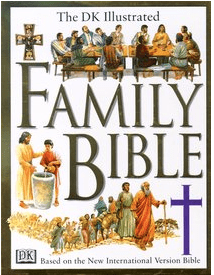
6-12 year olds: The DK Illustrated Family Bible. This accompanies an excerpted version of the NIV 1984 text with lots of geographical, historical and archeological facts. It will appeal to a child with an inquiring mind, and it’s a great way to get an older child reading an adult version of the Bible for themselves.
And (fanfare) here are my favourite children’s Bibles. They’re not only beautifully told and illustrated, they also show how every story points to Jesus and fits into the big Bible story.* I’d suggest you buy both of these, but since they’re quite interpretative, you may also want a more straightforward children’s Bible such as the Read With Me Bible, depending on your preferences and the ages of your kids.
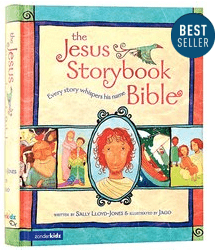
5-10 year olds: The Jesus Storybook Bible. Every Bible story finishes with a couple of paragraphs explaining how it points to Jesus. The exquisite illustrations are far beyond the normal standard for children’s Bibles, and the writing is dynamic and appealing. For good and ill, the repeated idea in this Bible is the “Never Stopping, Never Giving Up, Unbreaking, Always and Forever Love of God”.
4-8 year olds: The Big Picture Story Bible. Instead of concentrating on individual stories, this Bible gives the overall story of God’s saving plan- “God’s people in God’s place under God’s rule” – cleverly using pictures and words to show how it is fulfilled by Jesus. I like the way this Bible subtly hints at some important theological concepts along the way, like the creation of the world by God’s word. It’s engagingly told, brilliantly illustrated, and big enough to read to a group.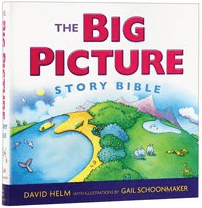
Independent Readers: By the time they’re reading independently, your kids will need a proper Bible. You may choose to give them an adult’s Bible. But if you’d like them to use a simpler Bible for their own reading, some decent choices include:
- the Good News Bible, a simple adult’s translation
- the New International Reader’s Version– a good transition to the NIV, with short, clipped sentences perfect for reading out loud; we use this during our family Bible readings.
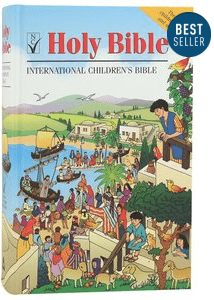 the International Children’s Bible, the children’s edition of the NCV – the only Bible I’m aware of translated specifically for children from the original texts. This version may be preferred by families who read the ESV for its accuracy and thoroughness.
the International Children’s Bible, the children’s edition of the NCV – the only Bible I’m aware of translated specifically for children from the original texts. This version may be preferred by families who read the ESV for its accuracy and thoroughness.
You can find more Children’s Bibles and resources at the Bible Society shop online.
* The potential theological pitfalls and advantages of The Big Picture Bible and Jesus Story Book Bible are explored in detail here.
Email This Story
Why not send this to a friend?
